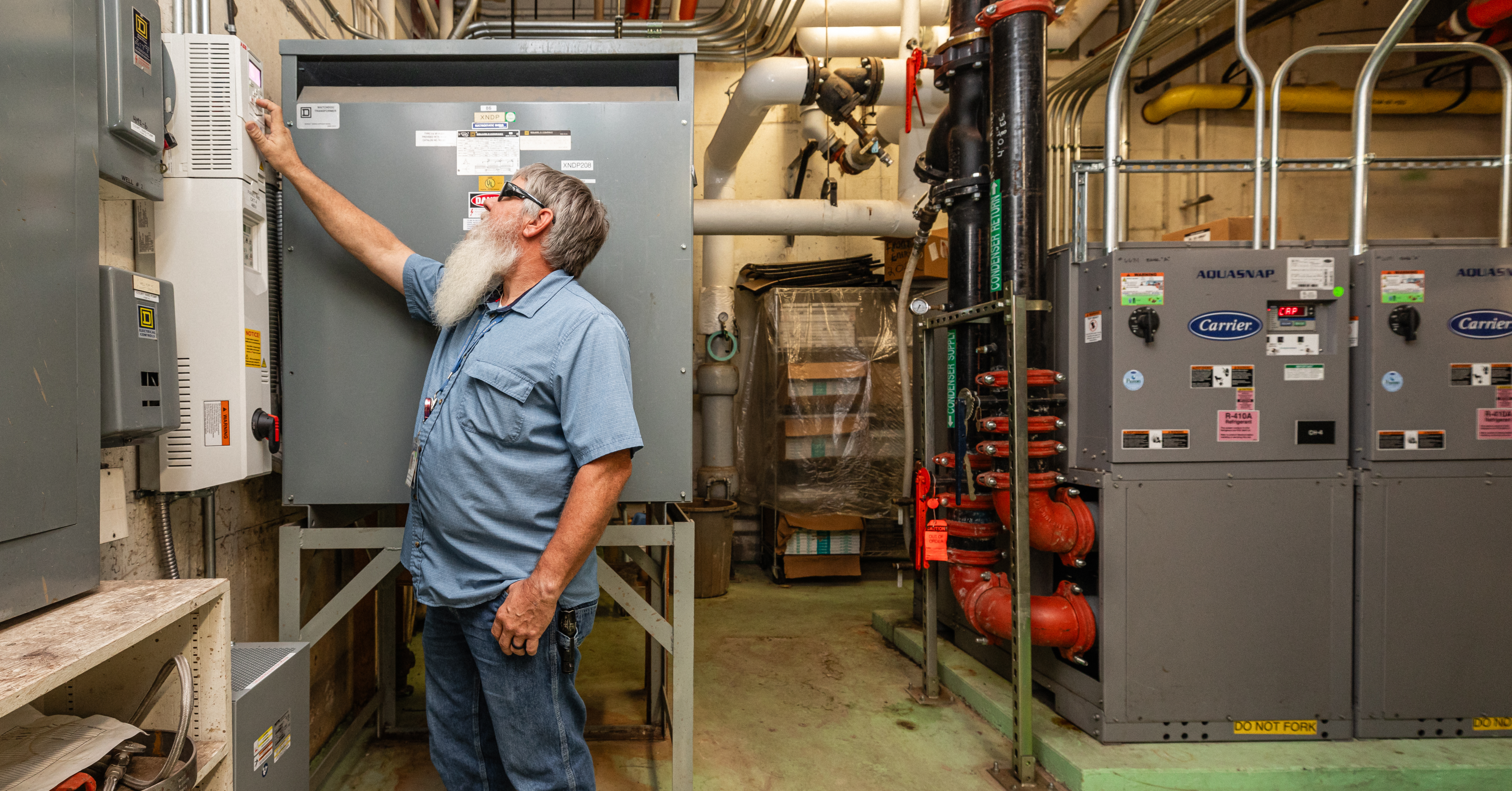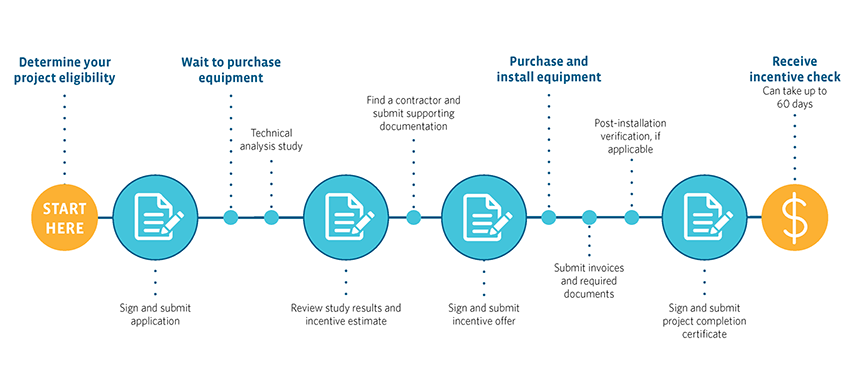
Not every energy-saving project fits neatly into a standard incentive offering. That’s where custom incentives come in.
Custom incentives are available for energy upgrades that don’t qualify for Energy Trust of Oregon’s standard incentives. Instead of choosing from a set menu, custom incentives are calculated based on the unique energy savings of a specific project. These projects often involve more complex or specialized equipment. If your upgrade will save energy but you don’t see it listed on our standard incentives page, there’s a good chance it could qualify for a custom incentive.
So, what kinds of upgrades are we talking about? And how do custom incentives actually work in practice? Let’s break it down.
What kinds of projects qualify?
Custom upgrades tend to be larger, more complex or just a little outside the usual scope. They might involve advanced controls, process improvements or a bundle of equipment upgrades working together to improve energy efficiency.
For example, a business might install an energy management system that monitors and optimizes energy use across their facility. Or they might upgrade to high-efficiency air compressors, HVAC systems or direct digital controls that aren’t listed in the standard incentives catalog. In cases like these, Energy Trust works with you to estimate how much energy your project will save and calculates a cash incentive based on those savings.
Another popular path for custom incentives is retrocommissioning. If your existing equipment is in decent shape but not running as efficiently as it could, retrocommissioning offers a way to fine-tune performance without full equipment replacement. This might include fixing broken dampers, adjusting temperature sensors or updating control strategies. Small changes can lead to big savings.
What to expect and how to participate
Step 1: Reach out
Custom incentives need pre-approval, so get in touch with us early. We’ll work with you to schedule a technology-specific or facility-wide study, depending on your needs, to identify potential upgrades and estimate energy and cost savings. If you already have a project in mind, contact us with the details and our team will review it and send you an incentive application to get the ball rolling.
Step 2: Complete technical analysis study
All custom projects require a free technical analysis study to estimate energy savings and calculate potential incentives. These studies require minimal effort on your end and typically take about 3 to 4 months. Upon completion, we’ll review the results with you. If you decide to move forward, the next step is to find a contractor and submit your incentive offer for approval.
Steps 3: Start your project
After you receive project approval, you can purchase and install your new equipment. Once the work is done, send us all relevant invoices and we’ll schedule a post-installation verification to confirm everything’s running as planned.
What to expect from the post-installation verification process
For custom upgrades receiving $5,000 or more in incentives, we require a post-installation verification. This is a simple site visit where an Energy Trust representative will walk through your facility with you, your contractor or facilities manager to confirm that the installed equipment matches what was outlined in the technical analysis study.
We’ll look for visual confirmation, like piping going into a heat exchanger or equipment performance data related to the upgrade, ensure everything is operating as expected.
After the visit, we’ll compile a detailed report with photos, figures and other necessary information to finalize your project and issue the incentive. Depending on the project, this step can take anywhere from a few days to a few weeks.
Tips for a smooth custom upgrade experience
A few simple steps can go a long way in keeping your custom project on track:
Communicate early and often: The sooner you contact us, the more we can help – whether it’s confirming eligibility or identifying the best path forward. Waiting until after installation begins can limit your options.
Check before you buy: Equipment must meet specific requirements to qualify for incentives. We’ll outline those specs during the technical analysis study, but if anything is unclear, just ask. It’s always better to double-check before making a purchase.
Document everything and stay organized: Custom projects involve several steps and touchpoints. Keeping good records, like tracking invoices and having utility information handy, helps the process run more smoothly.
Discover hidden energy-saving potential
Qualifying for custom incentives might be easier than you think. Our team is here to guide you through the process, reduce the guesswork and help you secure the highest possible incentive for your project.
Learn more about incentives for custom upgrades or get in touch if you have questions or are ready to get started.

